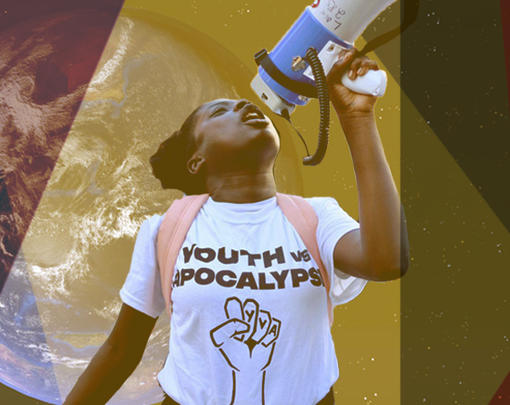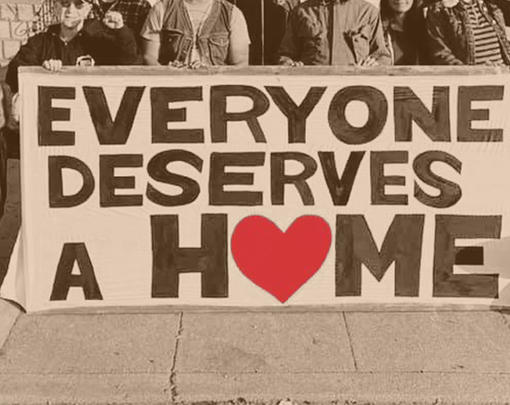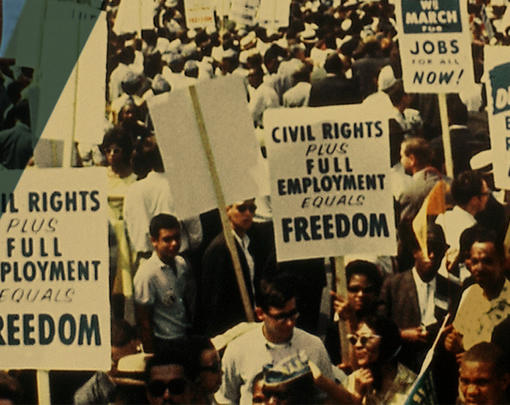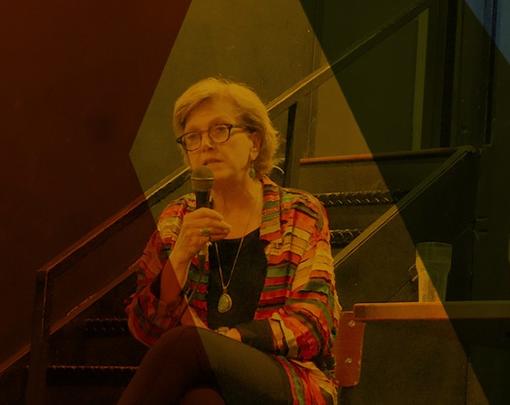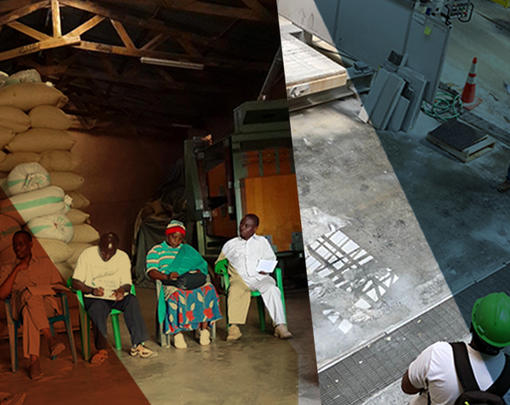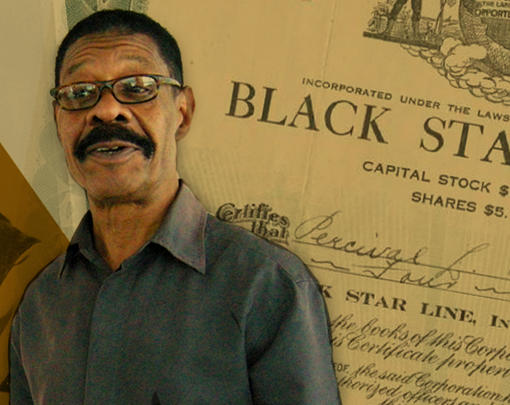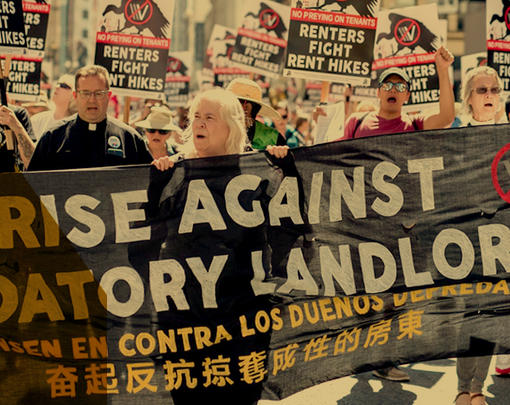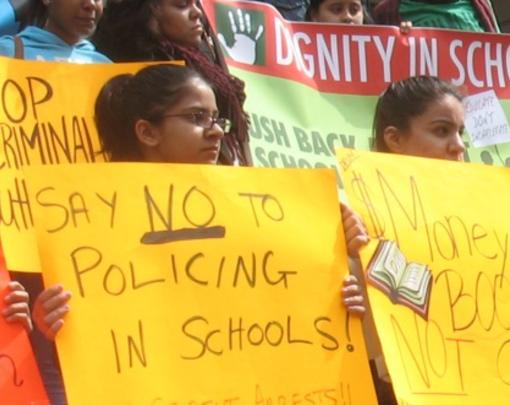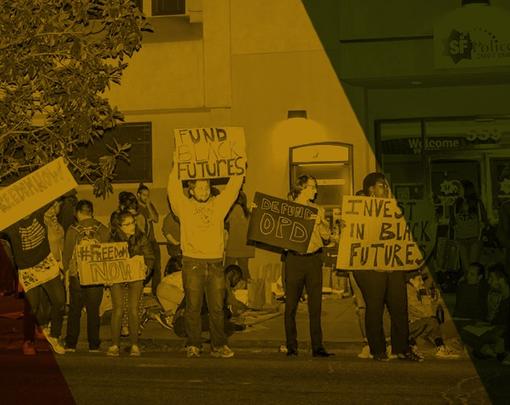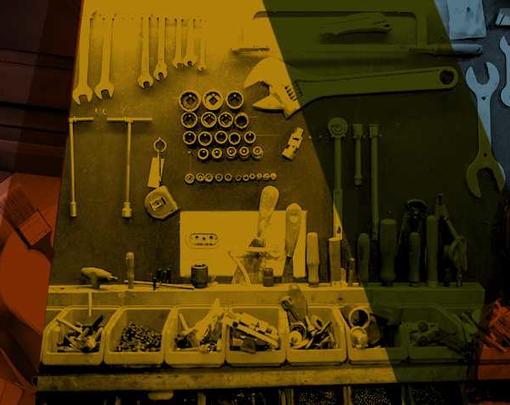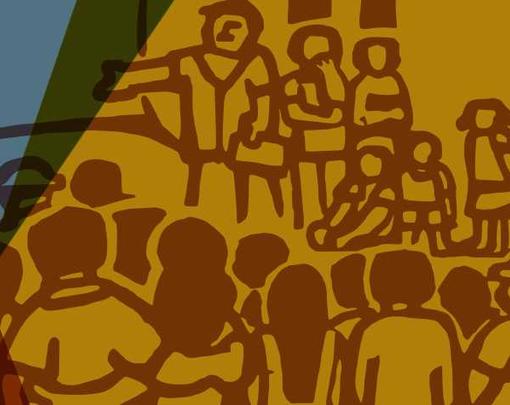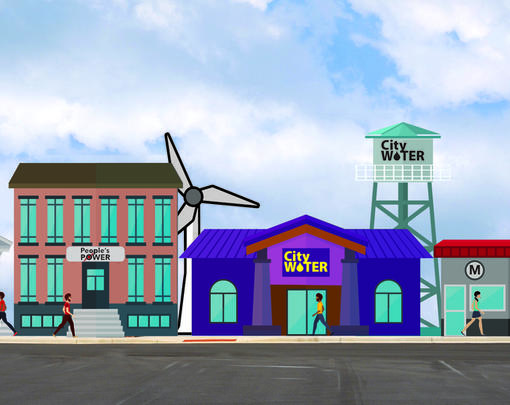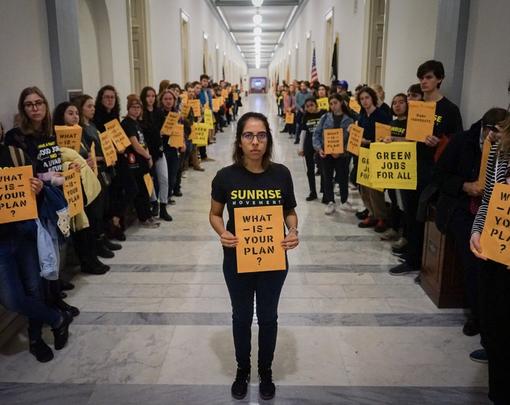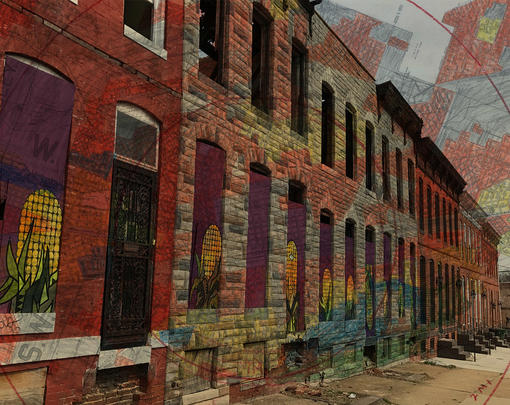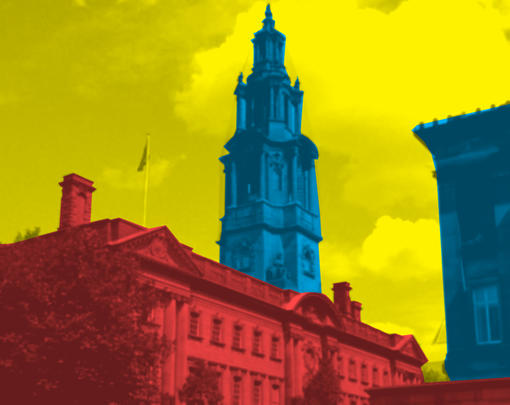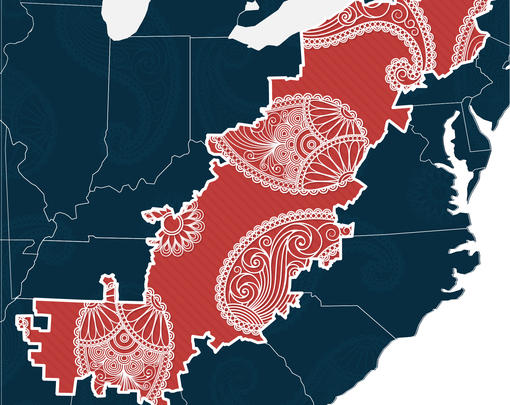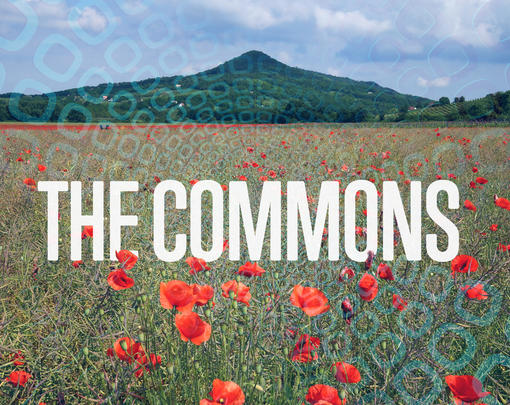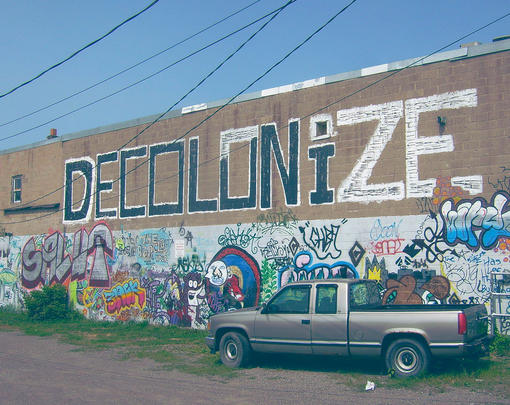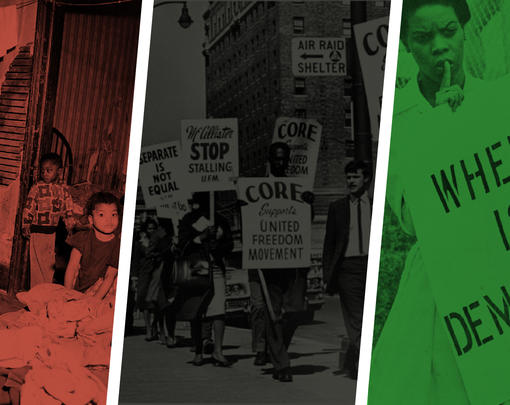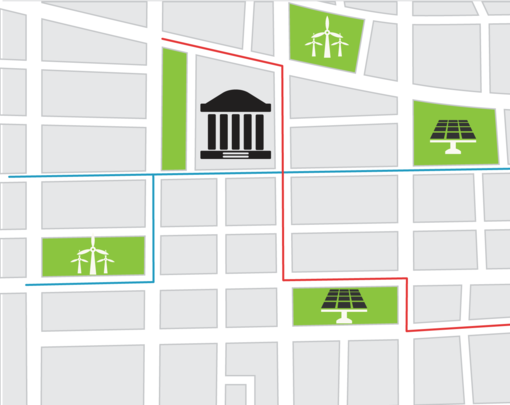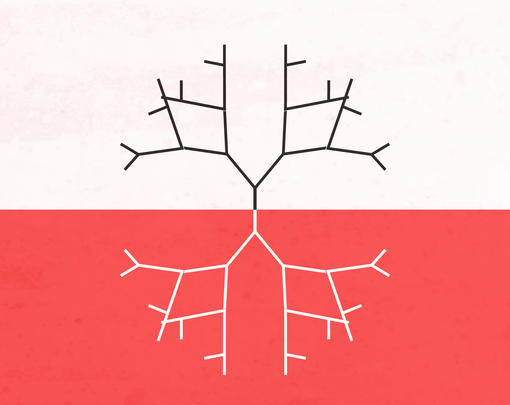The Democracy Collaborative’s Senior Research Fellow, Jarrid Green, joins the Next System Podcast to discuss his new report on community control of land and housing, which includes a discussion of actionable policies that cities can take to push back against gentrification and build community wealth.
Read and download the report here
Subscribe to the Next System Podcast via iTunes, Soundcloud, Google Play, Stitcher Radio, or RSS.
Adam Simpson: You’re listening to the Next System Podcast. I’m your host, Adam Simpson. Today our guest is Jarrid Green, a senior research associate at the Democracy Collaborative and author of a newly released report, Community Control of Land and Housing, exploring strategies for combating displacement, expanding ownership, and building community wealth.
Jarrid, welcome to the Next System Podcast. Before we begin with your report, I wanted to ask, what sparked the interest in this report? What led you to writing this report?
Jarrid Green: As I suspect, many of podcast listeners already know that the Democracy Collaborative has a history of working with anchor institutions, which are large, typically publicly owned nonprofit entities like universities and health systems to support the vision of community wealth-building—a framework for their community economic development that aims to create inclusive, sustainable economy is built on locally rooted, broad-based ownership of place-based assets. Over time, this has led to some really promising efforts around worker cooperative development in places like Cleveland, Ohio, where the Evergreen Cooperatives are located. More broadly, there’s an ever-growing ecosystem of anchor collaborative networks that explore the ways health systems and universities can leverage their operational community engagement and investment activities to support sustainable and resilient economies.
Given that background, I’ll cut to the chase and say that for a while that land and housing development, particularly that which relates to the issues of creating affordable housing and assigning the impacts of displacement in local communities, have often been overlooked, off the radar or neglected in this work, despite the very real and harmful impacts that even anchor institutions have played over time.
This is especially true for communities of color, where land use and housing development hasn’t always been the kindest. So the report that we wrote grapples with this dynamic and focuses particularly on the issue of affordable housing, and centers all of the issues we see around gentrification, and wealth and racial inequality, in this larger and longer history of displacement, including exclusion, which sort of undergirds how we operate as a society in this country. If nothing else, I think what’s really important is that amid the groundswell of interest in anti-displacement or gentrification movements and policies, efforts to address affordable housing crisis, I think have to be put into this larger context. That’s really the takeaway I got from talking with practitioners and grassroots advocates and grasstops folks and groups, who are all working on these issues and trying to figure out ways to adopt some of the strategies I talked about in the report like community land trusts, land banks, resident-owned communities and limited-equity housing cooperatives into policy and into their work.
Adam Simpson: You know, a lot of the Democracy Collaborative is about a “democratic economy.” And I wanted to ask, I know this paper is about democratizing different aspects of land and housing policy and procedures, but if our aim is for a more democratic land and housing system, how would you characterize our current land and housing system and what are kind of the consequences of this system?
Jarrid Green: That is a good question. I think in the report, the way I sort of get at this is that our current system of land and housing is, we’ve never really grappled with the legacy of displacement and the legacy of exclusion, particularly the sort of racialized and class-oriented way in which it’s all been developed. Today, I think those threads, they are so baked in that the average person looks at our system and the way we would characterize it as hypercommodifed or for the wealthy and for the rich, not benefiting broader communities in general and highly financialized. Folks, whether or not you’re living in a large city or whether you’re living in a rural area or in the suburbs, your mortgage is owned by a bank or a lot of the economy is owned by someone else. Our renter economy has grown dramatically and rents are higher than most folks can afford. More people paying 30 or 50 percent of their income towards rent, which is beyond what is affordable for most Americans. I would just say that folks in the current system would be one that is really set up in a way to benefit a few people. Both our policies and our economy supports that. And that’s not what I think a lot of folks would say they envision in terms of a democratic economy.
Adam Simpson: So one tension here that I want to raise, is between the notions of land, which I think we want to understand as kind of a public utility. a resource, and housing as something that might be, even if it’s kind of broad-based, privately owned versus land, which seems to be connected to the environment, connected to a lot of different forms of resources. So I wanted to raise that tension and just to talk about how you understand land and housing when we’re talking through this.
Jarrid Green: So that’s a good question. There are a lot of scholars in this field that have done a lot of work, particularly in this goes back to scholars from Henry George and other folks who look at land and consider the way that it is used in terms of a locational space sense.
In a recent conversation that we’ve had with Laurie McFarlane, he hits the nail on the head with respect to how he describes it: Land is locational space, this fixed asset and resource that’s there. You know, if you go to a community, you’ve got one end and another end and in between is the land you have and that being an asset that doesn’t necessarily move over time, essentially a space that belongs to community. You give it value based on what you build on the land, how you use it. Whereas with housing, we can move housing. The things, the developments that are on top of land, we can move those things around. We can move businesses, organizations and the fixtures that are on top of that and address that in an economical sense in its own right, whereas land will always be there.
So the idea that you or I might own land as individuals and somehow have our own rights to that land is something that’s really been baked into the American or European and even broader than American, in a capitalist mindset, I would say. And so it sort of plays on this idea that we all have a right to something that we all need and need to have access to. And I think our current system lives in a Catch-22 falsehood space and our society is built on it.
Adam Simpson: One issue that often arises in these conversations has to do with the type of economic development that a lot of people accept as inevitable—there’s this notion of economic development that necessitates a type of displacement that people refer to as gentrification. Given your work on this report, can you tell us a little bit about your understanding of gentrification and how that relates to the broader system of land and housing and broader conceptions of economic development?
Jarrid Green: Sure. Gentrification is a term that was brought up in the 1960s to describe what was going on in London around transforming underinvested communities in London, into places for more of the wealthy and affluent. That’s been the system that I would say has moved from a macro level in terms of national policies to an even more local level. You see cities doing it on their own now, given the dynamics around the ability of the federal government to do it. When we saw the federal government do it in the 1950s and 60s, you didn’t call it gentrification at the time; I think most folks would call it urban renewal, and gentrification now is like a stepsister or stepbrother of housing policies that reflect the national prerogative around leveraging private capital to transform communities, which in turn gives up resources and depends on the ability of investors to make a return on community assets.
You relate that to the broader conversation about how land is used in general. Well, if you look at the fact that the communities in those spaces, those historically underinvested communities where folks didn’t want to move to, given policies of the early 20th century that moved everyone out to the suburbs. Now we see folks wanting to come back into the inner core of cities or even the suburbs closer to the cities, or folks leaving places where there are not a lot of hot cities—you might think about the Midwest or rural communities where there’s a lot of disinvestment now. The way that money and capitalism drives our economy and capital drives investment in the economy really speaks to, on one hand, in the urban communities or in the hot markets where folks are moving to and gentrifying communities, you see people who’ve been there who’ve been long disinvested in getting pushed out away from access to resources, opportunities to jobs, away from public transit, those kinds of things; on the other hand, you see the lack there of investment of capital, and other dynamics that cause those communities to flail or be stifled in their own development. And so this reliance on capital, which underpins gentrification in a way, really is harmful, not just in one community, it’s harmful as a whole, and some would argue unsustainable.
Adam Simpson: You touched on this earlier. I wanted to give us a chance to explore it a little bit deeper, but in particular in the American context, there are broader issues about wealth and equality, but in particular when it comes to the racial wealth gap, you alluded to kind of the history of segregation and the broader system of white supremacy and the effects that’s had on our land and housing system, which that, of course, has exacerbated disparities in land and housing. As I understand a lot of the wealth transfers that white families pass on from generation to generation has to do, for instance, with real estate. I wanted to give us a chance to explore that space a bit more; your understanding of how in America, one of the biggest forms of systemic oppression has played into our current system of land and housing.
Jarrid Green: Sure. It’s been an overwhelming form in terms of how we access space and opportunity. In the report we go back to the early 1800s and can start around 1812 or so with the War of 1812, or even before with the dynamic from the moment that Europeans got here and started to wage battles against the Native communities in America, and the wars and seizures of land and trickery around even negotiating the trade of land that was happening between native communities and the colonialists, and how that stole land from those folks and those communities, and how, for folks brought here as slaves, they were explicitly restricted from access to owning land at all and yet worked and developed it all over time. Then when slavery ended, you see that one of the acts that President Lincoln signed that had initially been to try to give former slaves some access to land had been rejected and that policy had been reversed; some of the land that had been set aside for people to take up settlements on was given back to owners who were themselves colonialists or slave owners.
There’s much more of this in the report, but as you get to the 1930s and the federal government actually steps into the housing space, what you essentially see is the federal government using race and class in an implicit way to bake out an entire land housing economy for whites to settle all across America using federal government resources and then build up the entire middle class mostly for white folks, while excluding access to home ownership for other folks. And you know, there’s a great documentation of redlining policies and the homeowners loan corporation and the discrimination that took place in there, the covenants that were used to restrict access to people from moving into certain communities or sell their homes and land to other folks.
I also want to mention that one of the things I really wanted to touch on in the report and cared about was not just showing the direct relationship to land. In some cases there was also the direct relationship to being able to enter the United States. There was the Chinese Exclusion Act, there were so many other acts related to particular communities. The United States, like we do today, regulated who gets to come in and when and what they can do in this space. And so, we’ve used land and housing access as a tool to, on one hand for many generations and centuries, to restrict access to people of color and communities of color while essentially setting up a system for whites to flourish and pass on generational wealth. To be clear, this isn’t all whites; obviously there’s some delineation between the whites who have been able to take advantage of these policies and those who weren’t. In the 20th century we’ve seen it turn to sort of a more implicit structure, particularly post-Emancipation.
So even today, we see this all live out in what we talked about earlier with gentrification. We see that because of land access, homeownership access or affordable housing access has been something that is based on the ability to have capital in certain ways and the development of communities and cities and towns rely on that potential tax revenue that they’re getting. What’s ended up happening is that those racial gaps that are being built around land access and ownership, between race and class are being perpetuated, just not so explicitly. They’re being perpetuated through a policy in a very subtle way. And it’s leading to outcomes that we can see across race and class today that we probably weren’t able to see many years ago as clearly.
Adam Simpson: So let’s get into the solutions aspects of your paper. Rather than starting with the different models and policy solutions that you propose, I do want to talk about the values that you emphasize in your report and talk from there. In your paper, you emphasize strategies that can help create inclusive, participatory and sustainable economies built on locally rooted, broad-based ownership of place-based assets. So I want to go through just a few of those. Leading the discussion from these values, let’s start with inclusivity. If a policy maker or a community representative came to you and said, you know, I’m in charge of this new project, this new land and housing project and my number one priority is a more inclusive land and housing system in my community, what kind of model do you think that you would be particularly interested in? Or you would guide them to someone interested in inclusivity specifically?
Jarrid Green: Well, what I would do is first follow up with that person and asked them about whether or not home ownership is an important value, whether or not it’s really an important thing for them to consider wanting to build a culture of ownership in that economy—hopefully they would—or if the community they are working with is thought to be more transient. I think based on those answers, and maybe it’s both, you would look at different tools to help support those things. I think I make that as one of the first things I point out because as we know, people are transient people. However, I think when we’re talking about inclusion, we really should be clear what the goal of that inclusion is.
I think a lot of our policies fail us because we see things like affordable housing lotteries or cooperative ownership, even community land trust ownership that can do rental housing or CFI or community development, corporation-based ownership of housing portfolios, where they rent to people. You can see a lot of that renter economy happening even with the strategies that are out there that are intended for long-term sustainability or long-term affordability in the economy. Now when you’re talking about ownership, I think that that may bring about a different sort of weight to what that policymaker is looking for and you might leverage the tools differently. I hope underlying what I’m saying or I think is that you can leverage tools like community land trusts, land banks, and resident-owned communities and cooperatives to do a mix of things. And what’s important to consider is how deep you want your resources and how long you want your resources to stretch you.
I think if you say, I’m in charge of a housing development. I’m a policy maker. It’s just one development. We’ve got a certain number of units that we’re trying to create and we’re trying to build or we’re trying to create one community of single-family homes and they’re trying to build home ownership, then you might be able to only stretch your resources so far if it’s about ownership. If it’s about rentership, you might actually be able to mix those resources to make it serve more people, let’s say, but that may not get to your end goal.
In terms of what model to consider, of course I’m going to point you to the models that I’ve been researching, but I think what’s really important in terms of the value is I just think about how we’ve tried to address inclusion nowadays: through looking at things like inclusionary zoning and affordable housing lotteries and mixing those policies together to try to make sure that housing development or a community is open to folks with mixed incomes. A lot of these things are income-based. So when people think about inclusion, they go to what does a family make or what does an individual make and does the housing development or the community overall have a mix of incomes. And then does that represent inclusion?
I think if you’re talking about building inclusion in terms of racial and economic inclusion, again, that conversation around how home ownership and rentership really needs to happen to figure out what resources and capacities are needed to sustain a diverse economy of folks who can own and access the opportunity to own in certain communities. I think I would say whether or not you’re looking at a community land trust or if you’re looking at a cooperative, if you’re looking at just regular, ordinary, conventional, single-family homeownership policies and how your zoning policies might influence that, I think you have to be mindful of what transparency and accountability mechanisms are in place. You can’t say “I want a community to be diverse and inclusive” and then snap your fingers and then the community is diverse and inclusive.
I think you can try to create the opportunities for a community to be diverse and inclusive. But what you really need to have on the back end is to try to make sure that when folks apply to be in that community, that there isn’t discrimination happening in the application process, when you wait out the incomes of a community or for particular developments or for a broader community, you’re not overextending the resources that you have to actually support the community or if you’re planning it and you saw the opportunity to put a lot of resources to it, you don’t short yourself on the resources to go deep.
One thing that comes to mind is community land trusts and the community that they had been able to serve. If you look at the data around some of the community land trusts that are out there that actually have enough data to reflect what populations they’re impacting. A lot of them are impacting communities somewhere along the lines of somewhere between 40 and 128 percent of AMI, the average median income of households. That leaves out folks who make less than 40 percent of area median income. Right? And that leaves out, in a lot of cases, folks who make less than 30 percent of the income. And those are the folks who are the most marginalized, who actually need these opportunities. So, to be inclusive, I think you really have to be intentional about it and I think what we found nowadays is that public agencies and cities and municipalities often will not commit or don’t have enough support or resources to actually bake in the resources needed to make a community completely inclusive.
I just think about Brownsville or East New York in New York where inclusionary zoning policies that were intended to be inclusive, or were intended to help address the problem of access to housing have resulted in homes being built for certain people but definitely not the community that’s there. Those folks, the community that was there were folks who could barely afford what was the average rental income or what have you. They were relying on a lot of public subsidies and now you see solutions out there that are driving other people out of their communities because they just aren’t inclusive of them in the planning process.
Adam Simpson: So does that suggest like even outside of structures that may come along with a community land trust or a residential community or what have you, are there broader institutions in terms of like democratic control over communities that you think are essential as a process in addition to land and housing? It has to be that this kind of democratic aspect has to be baked in beyond land and housing is what I’m hearing.
Jarrid Green: Sure. I would say we have our policymakers, local elected officials who do the work for us and especially for these things, right, at the city level and what have you. I’ve seen places like in New York that have community boards for their neighborhoods or that have community development corporations, these institutions that have been reestablished in the 20th century and they’re still around; some of them even own their own housing portfolio stocks. These community-based institutions that work not only with policymakers but with local residents on the ground to be a check or balance between the two of those, the policymaking space and the advocacy that is happening around what the community needs and actually providing the resources.
I would say what comes to mind is community benefit agreements. They themselves, which we talk about in the report, aren’t direct forms of ownership; they can set up institutions or entities within themselves to help policymakers, local residents and other community stakeholders be part of the decision-making around the resources. That’s what a lot of folks in communities are advocating for now. Where a development wants to come in, typically the policymakers or elected officials are ready to make decisions around how to allow the developer to come into that community. A lot of grassroots communities have been saying, “Well, these developers are coming in and they’re not providing anything that we need. Great, they’re gonna provide potential tax revenue, but we need housing” or “we need jobs.” Getting those tangible demands out there and in a legal format that allows communities to steward the resources in partnership with the private entity or a public entity, I think allows a folks to get at that dynamic which can often be that the folks living in communities are at odds even with their own policymakers who feel the need to make change happen quickly and often that quick change is not really the change that would be what the community needs or feels they need overtime.
Adam Simpson: So let’s move on to the notion of broad-based local ownership of land and housing. How do one or many of your solutions fit in there? And can you tell us about those solutions?
Jarrid Green: When I think about the notion of broad-based ownership, the idea, the notion is that ownership is not baked in for a certain class of folks. I think it’s spread across different forms of entities. And so I think underlying the strategies in our report, community land trusts, land banks, cooperatives and community benefit agreements is the notion that these aren’t going to solve all the problems; I don’t think in the next 50 years or so that we’re going to change our economy to just be reflective of these kinds of strategies. I think what broad-based ownership means in this context is that you have ownership that’s spread across different forms of ownership and different types of ownership so that there’s a sustainability thread here, but that way it’s all not baked into one kind of means of doing things. It’s not all into banks, where banks might go under and then suddenly you’ve got another financial crash and then everyone suffers.
I think broad-based ownership here in terms of the particular strategies is like a two-way street. You could bake it into these models to make sure that a community land trust is diversifying how communities own their resources. So it’s a nonprofit organization based as a community land trust— a nonprofit organization that’s based in the community that essentially works to achieve the goal of stewarding land and housing over time for generations. I’m giving a broad definition there. In the popular discourse at the moment, typically we’re talking about housing, but community land trust also can steward things like community gardens and commercial real estate and there’s some great activity out there in the space. And so when I think about the answer to the question on broad ownership there we could be talking about broad ownership in the types of what’s owned and how it’s being stewarded by one organization or we could talk about the other way, which is that we leverage these resources like community land trust or cooperatives, etc. to create an economy that has broad ownership, where we have nonprofit ownership and community land trusts, or we have nonprofit ownership for a committee development corporation. So we have private ownership for folks who needed it, or we have social housing in some form and the public owns that space generally, and we have that in some ways in our economies. I just think that there’s a great disparity in how we actually resource those things and there’s also a lot of stigma and I think fear to fully support things that aren’t reliant on capital in the conventional sense of the term because of how they either weren’t as successful or weren’t supported or had failed in the past.
So, to be clear, there’s public housing out there now. There’s community land trusts out there now. There are cooperatives out there now. People are using land banks and community benefit agreements out there in communities now. There’s single-family home ownership out there now. There’s duplexes, townhomes, and condos. All of these things exist in our world today. What our policies have done and what we’ve done as a culture and society is privileged, in a conventional sense, what some might call the American Dream around single-family ownership. And we prioritize that so much that we have overlooked the opportunity to invest in resources that we all need as a society to rely on. And I think that’s what this report gets at is that these strategies that we are investigating and trying to explore need, one, a clear investigation to see their impact and potential impact. There also needs to be continued support for them in a way that builds on to where we’ve seen them be successful in other countries and even in our own backyards. Our universities, our health systems rely on some of the same mechanisms to steward their own housing portfolios or for their own employees and direct constituencies, but they don’t do it for the community broadly.
Adam Simpson: You have a bit in your report about like getting specific about how anchor institutions can play a better, a more positive role in the land and housing system. Could you describe your thinking there?
Jarrid Green: Sure. And to clarify for the listeners, when you say a more positive role, I want to speak to the fact that what we do in the report is trace the role the anchor institutions have played in displacement, situating what is potential and what is positive into what’s been the long history. Not to say that it’s all been negative, but just to say that anchor institutions like hospitals, health systems, and universities and cultural institutions have long had a real estate function or role in our economy. Some of the more pronounced examples are in the urban renewal period where our cities essentially leveraged big cultural centers and educational institutions and built them out right where there used to be a huge low-income communities or communities of color, and in the process displaced thousands of people all across the country.
There’s been some change in how that dynamic works, and there’s also been a lot of acceptance on the part of anchor institutions that they need to play a role in building an affordable housing economy, particularly to the extent that it’s needed as a result of their own development and expansions. There is a way for these institutions, particularly public ones that get a lot of public resources to build out not only just the land but to help develop their own business lines from our own tax dollars, to play a role in helping their immediate communities and the communities right after those communities to help steward resources and land in a way that makes sure that folks who need the jobs at those institutions or folks who need jobs at other institutions nearby can not only remain where they if they’re there, but also have access and opportunity to come and be there.
A lot of what we see, getting back to planning and gentrification is that these institutions or developments are coming to a space; suddenly speculation leads to a lot of people selling their homes or their businesses and private companies come in, the conglomerates come in, foreign capital comes in, the entire community changes. And before you know it, folks who were reliant on that economy being affordable ended up having to move out or get pushed out because they can’t afford to live there anymore. What we say in the report and what we highlight is that this doesn’t have to be the case. We know that anchor institutions have a lot of resources and influence in not only the policymaking in their spaces, but also in their communities and what the community looks like. They can leverage not only their operational dollars, but their investment capacities at community engagement capacities, their research capacities to support building an inclusive economy around their own existence, particularly their host communities, leveraging some of these strategies.
Adam Simpson: Your report is a quite comprehensive and this is a short conversation, so I wanted to ask, is there something you think is important that we haven’t yet touched on that you’d want to either just graze before we conclude today?
Jarrid Green: What we wanted to do with this report, is certainly not provide a silver bullet solution. I think there is excitement and a groundswell of interest in things like community land trusts and cooperative housing and things that can be and anchor supported support for these models. All of those things are all true and they exist and they helped influence the development of this report. I think what was really important to underscore is that some of these models have been around for nearly 100 years or so. Cooperatives have been around for ages, community land trusts and things like that, have their roots in the 1960s in America at least, but also have some of the things that undergird them, have their roots in practices that were here before the arrival of the Europeans in America at least.
While there are a couple of things that I think of the sections of our report are speaking to a couple of things that are really important to acknowledge if you’re thinking about how to leverage these strategies or ways to do this work. One, the section on displacement really is important if you’re thinking about how to address affordable housing issues with gentrification issues now. Folks often want to hear the solutions quickly. And that has led us into the economy now where we have a lot of solutions or so-called solutions that are essentially perpetuating the dynamics that we have seen over time. I think really situating the moment in the broader context is really important, which is the first section of the report. In the second section, what has been really interesting in doing the research for this report is the reality that for the models that had been there over time, there’s not been a lot of standardization across each city or each model in tracing the impact of this work. So a lot of data development has to happen in the community and there’s a lot of resources out there from institutions or even other public agencies in philanthropy that could be supporting them. But it hasn’t necessarily happened yet.
So I think there’s an entire infrastructure question to help support these models coming to fruition. I think it needs to occur. Then lastly, we speak to this in the anchor section, I think not only can the anchors help support and steward these models and promote them and encourage their development; I think we can look at the anchors as case studies for how they use these models, particularly the employer assistance housing programs or other kinds of programs where they are leveraging tools like ground leases to lease to homes for their faculty. These things can help inspire how other nonprofits can leverage those types of tools in their own space to help build out economies and communities that are inclusive and participatory and sustainable. All that together is just to say that there’s a long history of this work that has been done across the strategies we highlight, but also in terms of the broader context of the conversation and in terms of moving forward, we’ve got institutions and capacity out there in the world to help support these things coming to a having our coming-of-age moment and I believe that’s out there and there’s a lot more work to be done. And just that there are a lot of organizations out there like Grounded Solutions Network, Lincoln Land Institute, PolicyLink, and so many others who have been doing the work of trying to move these models forward.
Just as it is important to resource those organizations I think is really important to make sure we touch base with the folks on the ground who are moving the work, the folks were actually running the land trust and the people who were actually advocating for them to make sure that when we try to build these models out, they are actually being built out in a way that benefits the communities that need them.
Adam Simpson: Jarrid, thank you for the conversation today and for our listeners, while you’re at thenextsystem.org, please do visit the Community Control Of Land And Housing report on exploring strategies for combating displacement, expanding ownership, and building community wealth. I’m Adam Simpson. We’ll see you next time on The Next System Podcast.



